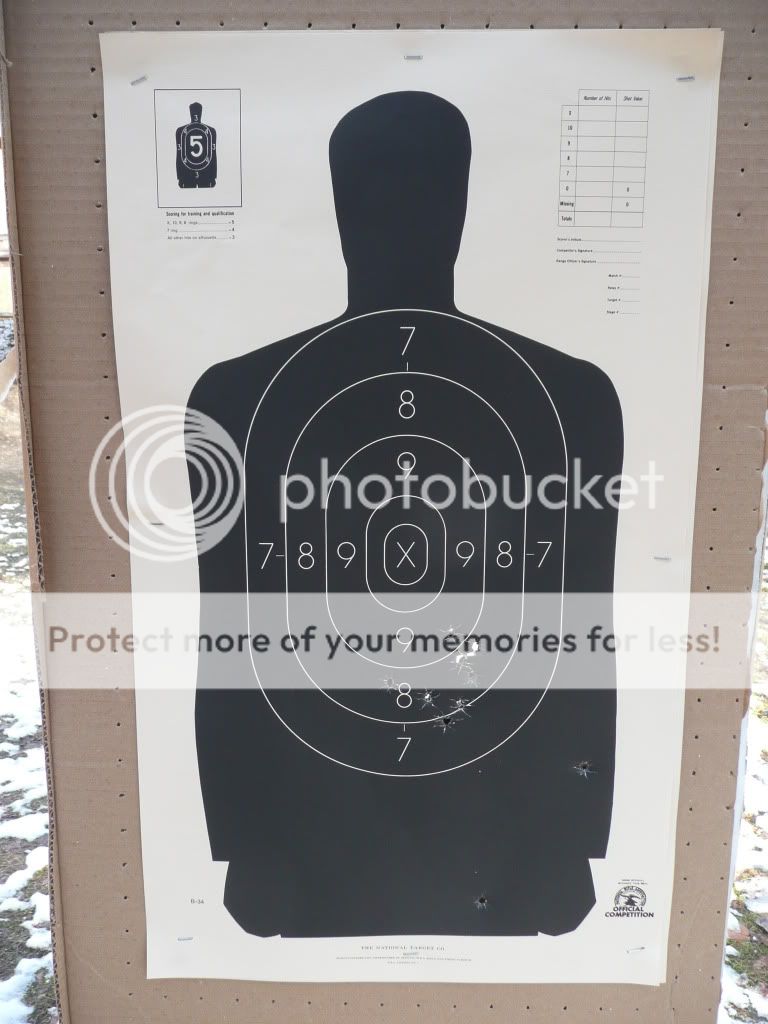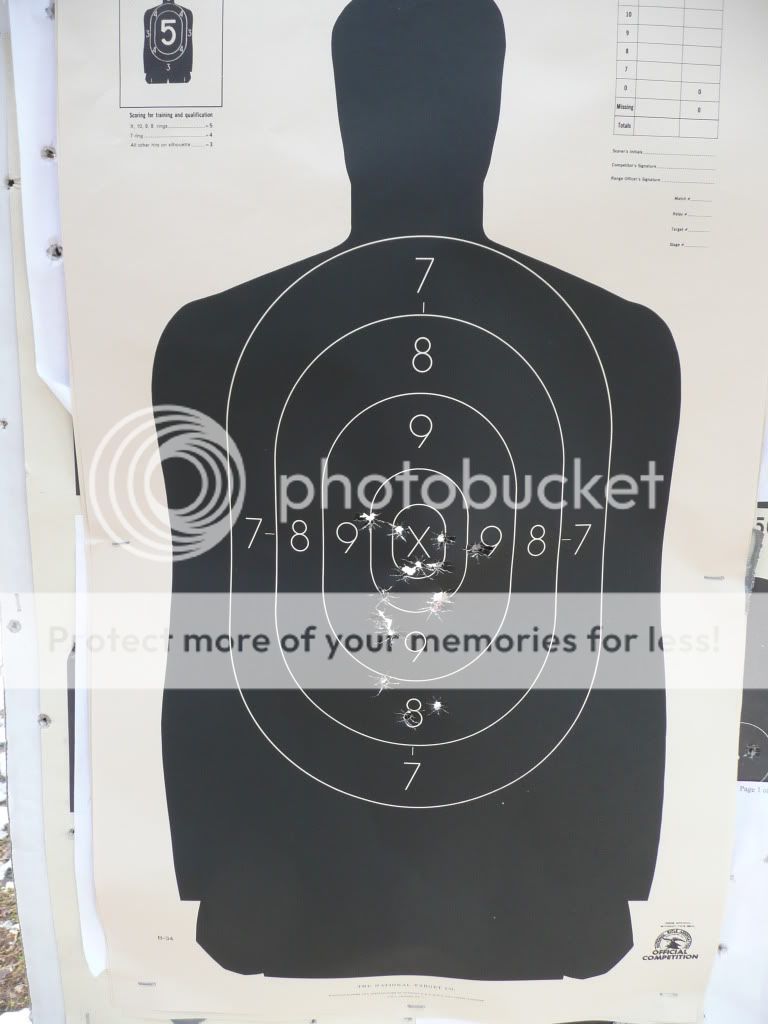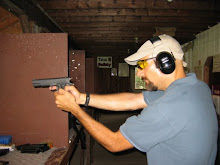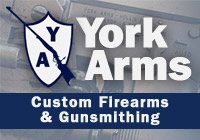I first mentioned getting a set of LaserMax LMS laser sights for evaluation for my SigSauer P226. Shortly thereafter, a second set of LaserMax LMS laser sights for my Glock G30 showed up for evaluation as well, offering two different laser sight systems on the P226 and the G30. I posted my initial impressions of the LaserMax sights as well as detailed the installation procedure last week.
I brought the LaserLyte sights to the range last week and tested the the LaserMax sights at the same time. I employed the same side-by-side set-up for the LaserMax sights, with the G30 on the left and the P226 on the right, and the iron sight targets can be seen here (G30, 25'), here(P226, 25'), here (G30, 50') and here (P226, 50') for comparison of my shooting without benefit of the laser sights. As mentioned in the previous report, the G30 had 10 rounds fired per target for evaluation, the P226 had 15 rounds fired.
The LaserMax sights are not user-adjustable - they come calibrated from the factory with a claimed accuracy of ± 2 inches at 20 yards. As my iron sight shooting attests, I don't possess sufficient precision to test that claim; however I can certify that the LaserMax units are more accurate than I am at close range. I had difficulty resolving the pulsating laser dot at 50 feet on the Sig P226 and was unable to resolve it on the G30; I surmised that the sub-compact Glock had sufficient fouling as to reduce the effectiveness of the laser unit (it had well over 100 rounds of cheap range ammo through it by the time this testing was begun).
As the expression goes, a picture is worth 1,000 words. Here are the results of the shooting:

G30, 25 feet
The two fliers at 4 and 5 were my error - I knew the instant my finger pulled the trigger on each of those that they were going south. The target is a marked improvement over iron-sight shooting of the baby Glock - the laser doesn't stop me from jerking the trigger down, but it sure helps me put the rounds on target faster and in a tighter area.
P226, 25 feet
I've got to work on my trigger pull on the Glock to reduce that jerking. That's one of the really nice things about the laser sights - you can really see areas where your shooting could use improvement. With the P226, the heavier gun and better grips meant less jerking, so it was easier to keep on target. The lighter, shorter G30 requires more concentration and practice, and with ammo prices - and availability - as they've been recently, I just haven't been shooting the .45 as much as the 9mm...
I was not able to pick up the laser dot on the G30 beyond 25 feet. It was simply beyond the capability of my eyes to acquire the blinking red dot on target at 50 or 75 feet in direct sunlight. The P226 I was able to acquire at 50 feet, but it did take a little squinting and concentrating to see the dot at that distance. The shooting says it all - the groups that had been deliciously tight at 25 feet became depressingly familiar at 50 feet:
P226, 50 feet
Low and to the left. A fair portion of this resulted from the difficulty in seeing the dot at fifty feet, which resulted in me squinting to see the dot and jerking the trigger more than normal when I finally managed to acquire the dot on target. Longer distance resolution of the laser dot on both guns should ideally be performed indoors under more controlled circumstances to offset the effects of direct sunlight.
I really liked the way the P226 shot with the LaserMax laser sights at 25 feet, so I put up another target just to make sure the first wasn't a fluke:
P226, 25 feet, take II
I think the P226 with laser sights is going to be the new house gun. That kind of accuracy at across-the-room distances with 15 rounds of 9mm +P+ at the ready? Oh yeah, I can see that...
It will be instructive to see how the LaserMax units perform in low(er) light settings. Informal testing around the house showed a laser dot that was quite visible at ranges up to 65 feet; it is expected that an indoor range will allow the units to be tested up to 75 feet. The LaserMax unit was tested last in this battery of testing and may have been operating at less than peak efficiency due to fouling; for the second round of testing it will be the first unit tested to lessen this potential impact.
At the closest range of 25 feet, the LaserMax LMS units functioned flawlessly on both guns. Accuracy was significantly improved, groups were noticeably tighter, and rounds went on target much faster than with iron sights. The unit is easy to turn on on either gun; the switch is in an ergonomically correct position for instant activation. With the button/switch located on the take-down lever for either gun, the trigger finger indexes immediately below and takes less than a second to turn on the unit.
The LaserMax LMS sights get high marks for the location of controls and for the rapid target acquisition. The unit is unobtrusive and requires no modifications to the gun or any gear that accompanies the gun. The laser dot is clear, crisp, and fast to acquire at close range; longer distances in direct sunlight are more problematic but not unexpected. This is a strong, solid laser sight that functions exactly as advertised.
The LaserMax LMS laser sights get an unabashed MArooned seal of approval.
That is all.
Obligatory FTC disclaimer: LaserMax did provide two LMS laser sights for review as well as a universal rail-mounted laser in their shipments to the writer of this review.







2 comments:
Hey Jay, your aim is improving. Keep it up and you may lose the "minute of berm" moniker:P
So, LasrMax = Guide-rod and LaserLtyte = replacement irons.
It's hard to keep 'em straight! I just got a Sig .22 conversion unit that I have to blog about - my Merry Christmas present.
Post a Comment